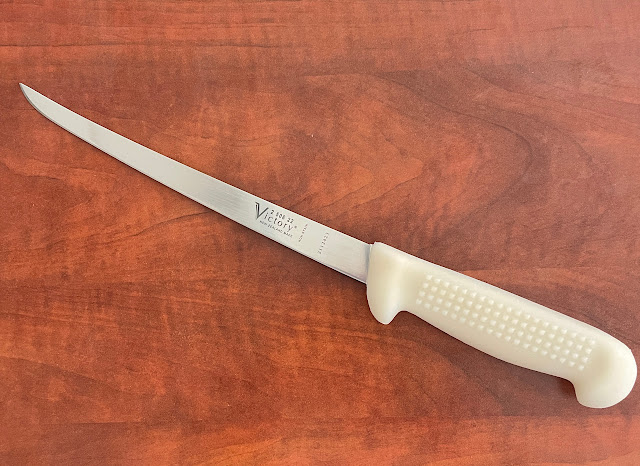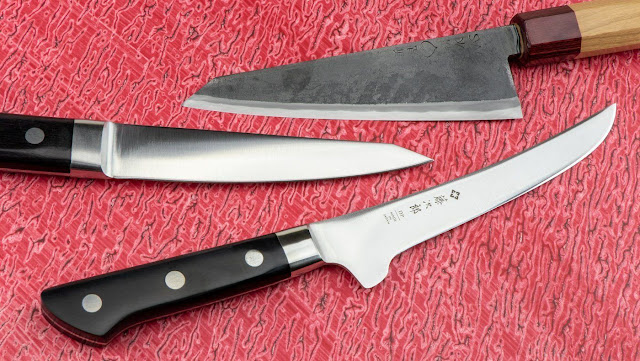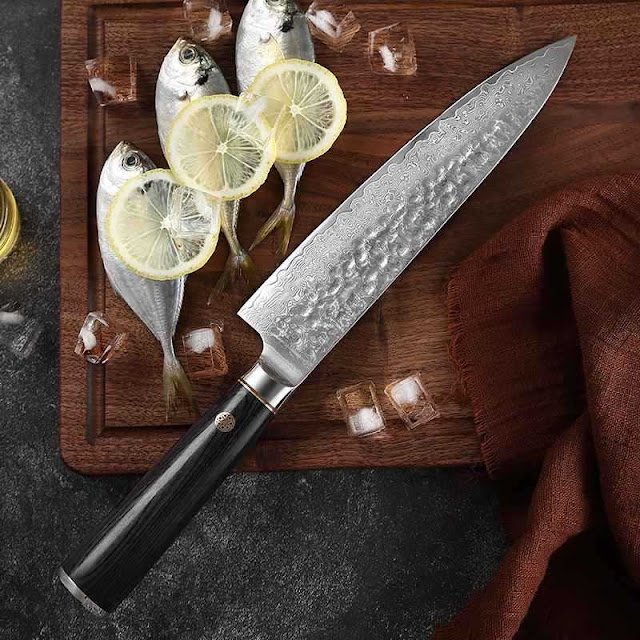Precision in Practice: Unveiling the Boning Knife's Unique Culinary Charm
In the realm of culinary craftsmanship, certain tools hold a special place for their precision and versatility. Among these, the boning knife stands out as an unsung hero, essential for any serious cook or chef. With its slender, agile blade and specialized design, the boning knife is the secret weapon for mastering the art of deboning meat and fish. Join us as we explore the unique attributes and culinary charm of the boning knife.
The Anatomy of a Boning Knife:
Unlike its larger counterparts, the boning knife is characterized by its slim, narrow blade and pointed tip. This design allows for intricate maneuvers, making it ideal for navigating around bones and joints with precision. The blade of a boning knife typically ranges from 5 to 7 inches in length, offering the perfect balance of control and maneuverability. Whether you're filleting a fish, deboning a chicken, or trimming a rack of ribs, the boning knife is designed to tackle the task with finesse.
Precision Deboning:
One of the primary functions of a boning knife is, as the name suggests, boning meat and fish. With its sharp, flexible blade, the boning knife excels at separating meat from bone, removing skin and sinew, and trimming excess fat with surgical precision. Whether you're preparing a delicate fish fillet or breaking down a whole chicken, the boning knife allows you to extract every ounce of meat with minimal waste, ensuring maximum yield and optimal flavor in your dishes.
Versatility Beyond Boning:
While the boning knife is best known for its prowess in deboning, its utility extends far beyond this singular task. Thanks to its slender blade and precise tip, the boning knife is also well-suited for a variety of other culinary applications. From trimming vegetables and slicing fruits to crafting intricate garnishes and performing delicate tasks such as deveining shrimp, the boning knife's agility and precision make it a versatile tool in the kitchen.
Choosing the Right Blade:
When selecting a boning knife, it's essential to consider the type of blade that best suits your needs. Flexible blades are ideal for working around joints and contours, making them well-suited for deboning poultry and fish. Stiffer blades, on the other hand, offer greater control and stability, making them suitable for tasks that require more force, such as trimming larger cuts of meat or slicing through tougher cartilage. Ultimately, the best blade for you will depend on your specific culinary preferences and the types of tasks you most frequently perform in the kitchen.
Caring for Your Boning Knife:
To ensure that your boning knife remains in optimal condition, proper care and maintenance are crucial. After each use, be sure to hand wash the knife with warm, soapy water and dry it thoroughly to prevent rust and corrosion. Regular sharpening and honing will keep the blade razor-sharp and ready for action, while storing the knife in a protective sheath or knife block will help to prevent damage to the blade and ensure its longevity.
Conclusion:
In the hands of a skilled cook or chef, the boning knife is a tool of precision and finesse, capable of transforming the ordinary into the extraordinary. With its slender blade, sharp tip, and specialized design, the boning knife unlocks a world of culinary possibilities, from perfectly deboned meats to exquisitely crafted garnishes. So whether you're a seasoned professional or an aspiring home cook, embrace the unique charm of the boning knife and elevate your culinary creations to new heights of excellence.




Comments
Post a Comment